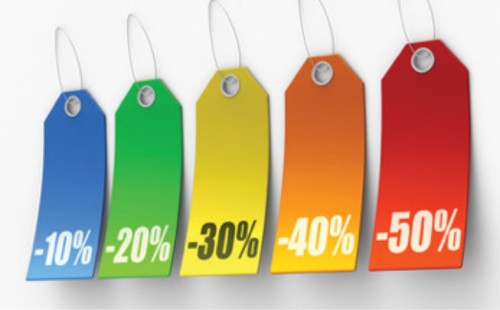
POTOO’s E-Commerce Price Defense Solutions
In today’s digital marketplace, Amazon and Walmart have revolutionized shopping. While these marketplaces and other known platforms offer brand growth opportunities, they also can bring…
Blogs | October 23, 2020
If you’re selling on marketplaces you clearly understand the value of your brand being shoppable on many different digital channels. While growth opportunities on these platforms can be massive, it also comes with challenges and pressure on the brand’s traditional business. High growth from marketplaces, like Amazon or eBay, can come with liability and risk if you don’t have an effective brand protection strategy in place.
Failure to protect your brand online can lead to a downward spiral in momentum – distracting your eCommerce teams by taking their time away from driving growth and forcing them to firefight. These distractions may cause poor reviews, low search rankings, low margins, delist potential, and regulatory liability in certain categories should products be expired or shipped incorrectly.
Here we detail three things you should be mindful of to heighten your marketplace brand protection and to make sure your brand goes from strength to strength:
1. Achieve consistent average selling price
The first quick-win to brand protection is to achieve a consistent average selling price. When you think that shoppers turn to marketplaces like Amazon as a point of reference, it’s potentially catastrophic if a customer is seeing wildly different price points for the same item – it instantly instills distrust in a potential purchase.
To avoid this, check your own promotional strategy and put in place a program to identify where distribution leaks are coming from. Are the products you are selling directly to Amazon shoppers priced the same in a brick & mortar store or on your D2C website? Do you have legacy distribution contracts that were built to support a small independent retail store that is suddenly selling products out the back door at volumes unexpected? It’s crucial to determine if marketplaces such as Amazon are internally price matching (Amazon 1P matching internal 3P sellers) or externally (Amazon 1P matching external retailers like Walmart).
Next, check 3P sellers vs. your MAP program (where relevant). Are they compliant? If not, go back through your distribution agreements and tighten up any existing arrangements to include MAP policy enforcement. And if you spot an unauthorized seller undercutting your product price begin the process of removing these potentially fraudulent sellers or work with them to become authorized.
Recommended Metrics:
2. Decrease catalog confusion
It may seem overly subtle to describe marketplaces as “item merchandising” platforms rather than “category”, but with most shoppers in spearfishing mode, every product must stand on its own. If you do wish to take a “category” approach, then the category is essentially the search term the shopper uses, and your goal is to merchandise your relevant items across as many search terms as possible with the goal of becoming the #1 seller against those keywords.
To do this efficiently, you need to narrow down your product assortment to increase your chances of taking the bestseller position and putting as much energy as possible against the winning SKU. This may be tricky if your product is sold in a ton of variations/sizes, or you’re having to fight against hundreds of rogue listings.
Before dumping a bucket of money into search campaigns for visibility, take some time to clean up your catalog, merge rogue listings, and have a serious conversation about which SKUs you should be driving vs. putting on maintenance. Only then will you have the best chance of getting to that #1 slot with the best ROI on that media spend – do not let unauthorized 3P sellers dictate your product catalog.
Recommended Metrics:
3. Increase product availability through your authorized 3P sellers
Authorized sellers should play a role in your route to market as they give you the capability to flex to new sources of growth with the right products in the right places. Many traditional distributors that you would have used to accelerate the number of doors your products were in may not be suitable for driving your sustainable eCommerce growth. We always recommend building a capability checklist to identify what you want in strategic eCommerce distribution partners. These partners may have a dedicated specialty in eCommerce fulfillment, search, listings management, and data analytics.
Once you have that checklist in place, think of ways to incentivize these authorized 3Ps to show them how to stand out from the rest. In many markets, for many brands, your ultimate goal may be to get everyone you sell to to ultimately become compliant with your checklist of what good looks like. In many markets selective distribution in this way may be straddling the line of what is allowed depending on your market share – so check with your legal teams on the best course of action.
Recommended Metrics:
As always, please reach out for more information and tips on how to combat unauthorized sellers!
Protecting the world’s most valued brands in the online marketplace.

In today’s digital marketplace, Amazon and Walmart have revolutionized shopping. While these marketplaces and other known platforms offer brand growth opportunities, they also can bring…

The world of online shopping is changing fast, and digital marketplaces are gaining more influence. Walmart’s online marketplace is growing rapidly, which is a big…

Making informed decisions is the cornerstone of success. The rapid evolution of technology and the influx of data have created both opportunities and challenges for…